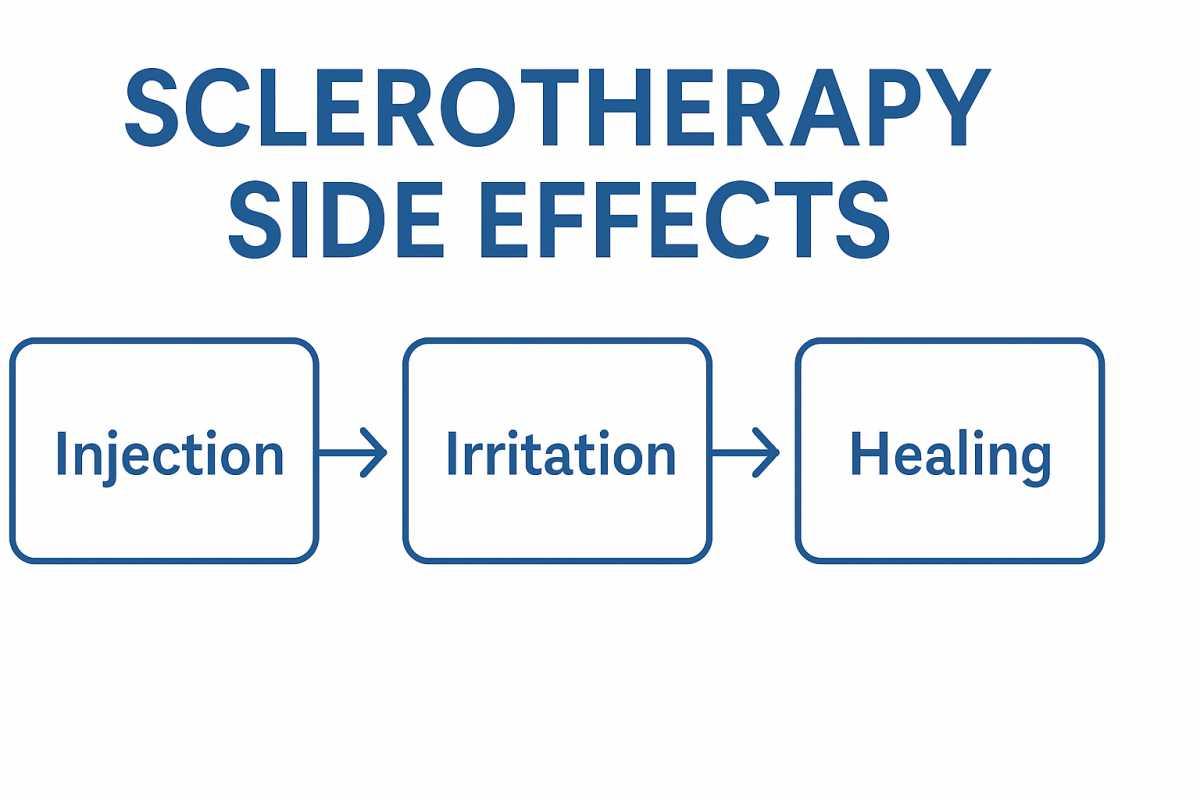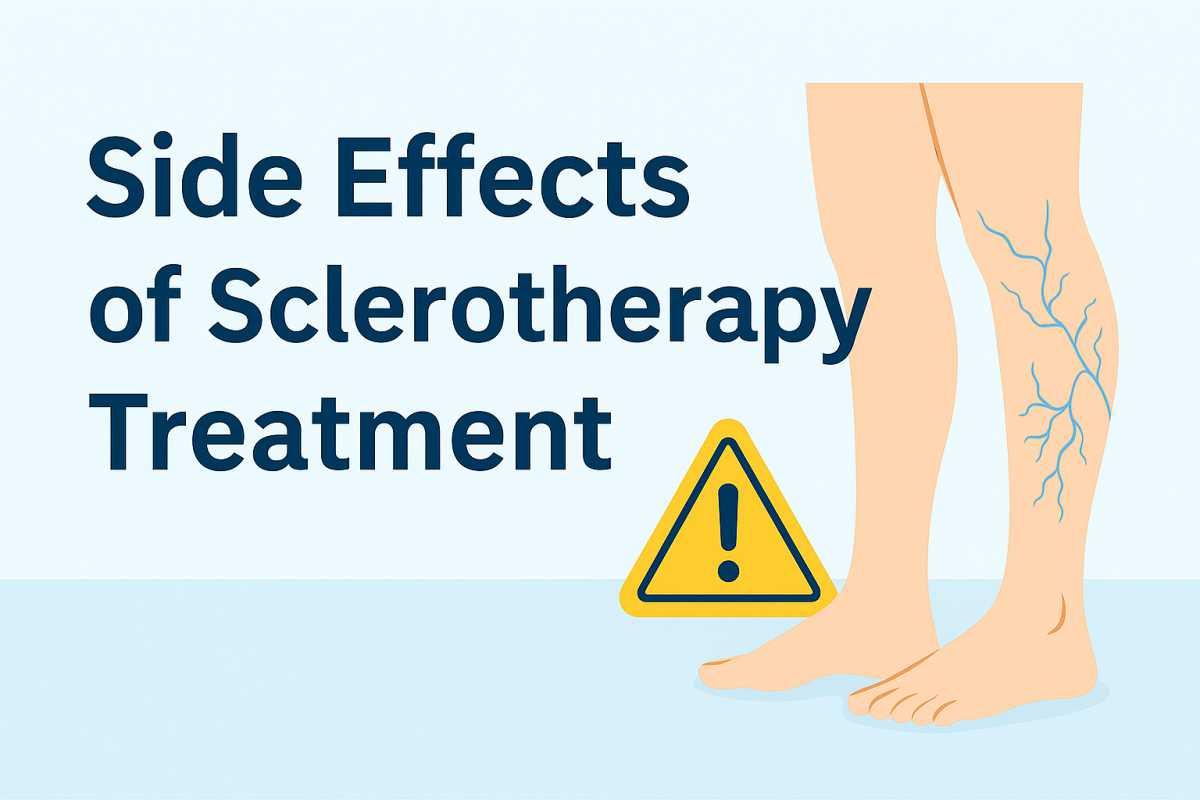When people consider sclerotherapy, their first real question isn’t “does it work?”—it’s “what am I in for afterward?” Side effects of sclerotherapy treatment are usually mild and short-lived, but knowing what’s expected versus what’s a red flag can save you worry (and help you heal faster). Below is a clinician-style overview written in everyday language.
The first 48–72 hours: what’s common
Right after injections, the treated area may feel tender, itchy, or mildly sore, and you can expect temporary redness or bruising along the needle tracks. If a larger vein was treated, you might notice a firm, cord-like strip or small “beads” under the skin—this is trapped blood within the sealed vein and often softens over days to weeks.
Most patients resume routine activity the same day, with light walking encouraged. Your clinician will likely recommend compression stockings for 1–2 weeks to reduce swelling and support vein closure. What to skip early on: very hot baths/sauna, heavy lower-body workouts, and long periods of standing or sitting without breaks.
Skin changes: hyperpigmentation and “matting”
Two cosmetic after-effects get a lot of questions. The first is hyperpigmentation—brownish lines or patches along the treated vein. These typically fade over weeks to months; diligent sun protection helps.
The second is telangiectatic “matting”—a faint blush of very fine new capillaries near the treatment site. It looks like a soft pink web. Matting often settles on its own; if it lingers, it can be touched up with additional sclerotherapy or surface laser, depending on your clinician’s approach.

What’s uncommon—and deserves a call
Most side effects are minor. Still, contact your clinician promptly if you notice:
Marked one-sided swelling, worsening pain, or heat in the calf or thigh
Fever, spreading redness, or drainage (possible infection)
Hives, widespread itching, or trouble breathing (possible allergic reaction)
Chest pain or sudden shortness of breath (very rare, but urgent)
For a clear, patient-friendly overview of expectations and risks, see this up-to-date explainer from Mayo Clinic: sclerotherapy overview.
How long do side effects last? Realistic timelines
Tenderness/itching: usually settles within a few days.
Bruising: commonly 1–2 weeks, sometimes longer for larger veins.
Hyperpigmentation: improves steadily but can take weeks to months to fully fade.
Cord-like firmness (“trapped blood”): softens over several weeks; quick in-office drainage can speed the process if your clinician recommends it.
Remember that larger, deeper veins take longer to remodel than tiny spider veins; multiple sessions are normal for broader disease.
Related Article: Sclerotherapy Treatment Complete Guide for 2025
Five practical ways to reduce sclerotherapy treatment side effects
Compression, consistently: Wear the prescribed class and duration—this single habit cuts bruising, swelling, and pigmentation risk.
Walk, don’t work out (yet): Short, frequent walks aid circulation; delay heavy leg days and high heat exposure for the first week.
Elevate and hydrate: Leg elevation in the evening, plus steady water intake, helps the lymphatics do their job.
Be kind to skin: Mild cleanser, bland moisturizer; avoid fragranced lotions on injection tracks for a few days.
Medication check: Tell your clinician about blood thinners, high-dose NSAIDs, or supplements that affect clotting. You’ll get a personalized plan.
Related Article: Sclerotherapy for Varicose Veins
Who should be more cautious
Extra screening is important if you have a history of clots (DVT/PE), active infection, significant peripheral arterial disease, pregnancy, or a known allergy to sclerosants. The procedure may still be an option, but it needs a tailored risk–benefit discussion, sometimes with ultrasound mapping and alternative techniques on the table.
Related Article: Sclerotherapy for Spider Veins
Bottom line
For most patients, side effects of sclerotherapy treatment are mild—think transient itch, bruising, or a firm strand along the treated vein—and they fade with time plus good aftercare. True complications are uncommon, especially in experienced hands. If you wear your compression, walk daily, protect the skin from heat and sun, and keep an eye out for the red flags listed above, recovery is typically smooth and predictable.
